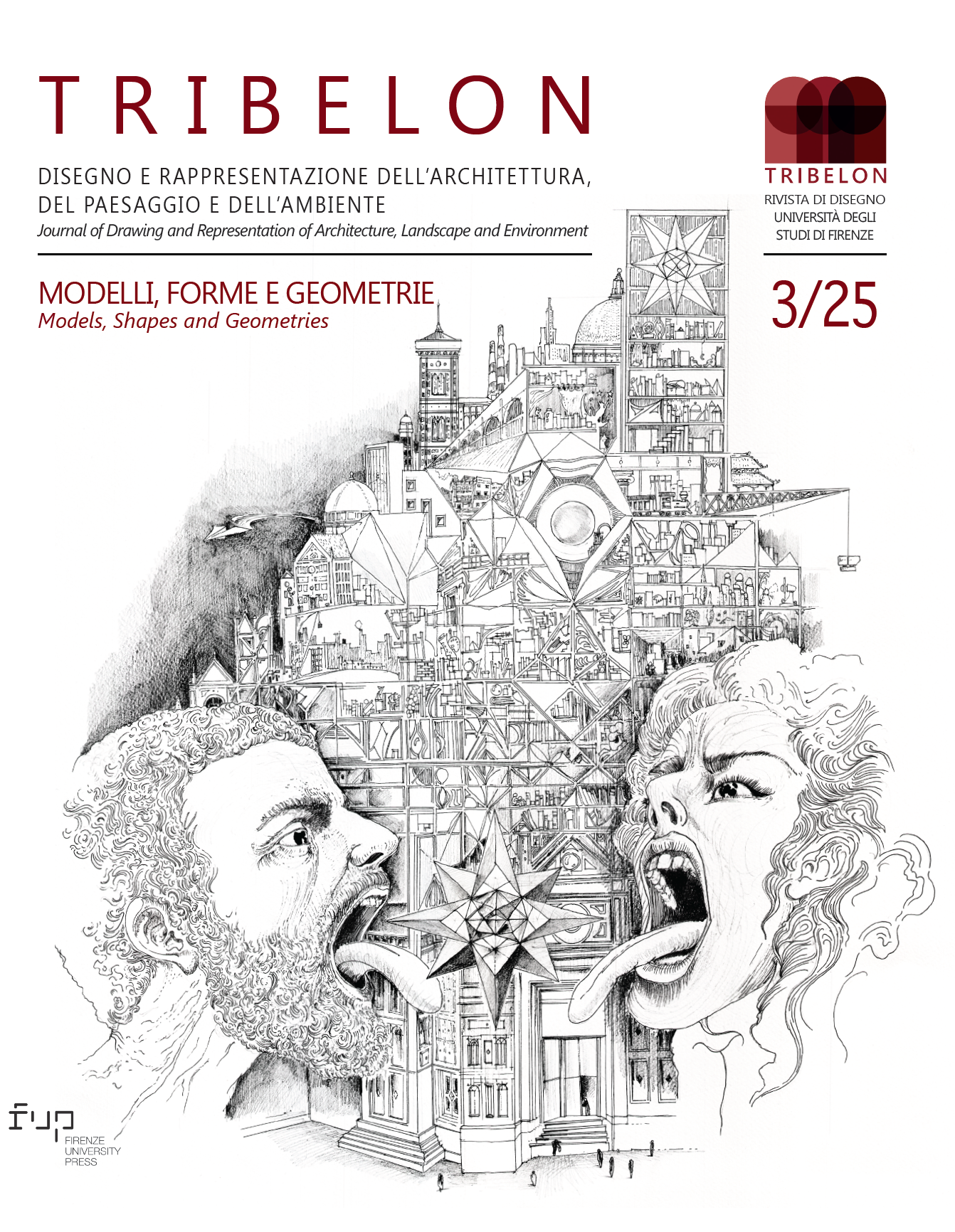Published 2025-06-09
Keywords
- Axonometry,
- Architectural Representation,
- Spatial Abstraction,
- Geometric Modelling,
- Cognitive Processes in Design
How to Cite
Copyright (c) 2025 Stefano Chiarenza

This work is licensed under a Creative Commons Attribution 4.0 International License.
Abstract
The hybridisation of physical and virtual reality, along with the myriad software available today for representing or even sensorially reproducing three-dimensional space, has defined new ways to present and test architectural projects. The validation of design choices increasingly relies on such tools, which, thanks to their ability to create interactions between subjects and space, are becoming integral to decision-making processes in design. However, in a context dominated by hyper-realistic simulation and perspective as the prevailing visual paradigm, axonometry still stands out as a relevant geometric model. By prioritising abstraction and interpretation, it becomes a bridge between thought and representation. In other words, its ability to translate abstract concepts into coherent, analysable, and measurable configurations makes this method a form of thought that transcends a merely illustrative role. It enables the tackling of spatial complexity and contributes to the development of both design and cognitive processes.
This essay explores the value of axonometry as a tool for analysing, modelling, and communicating forms, demonstrating how it represents a method that, by privileging the homogeneous space of geometric operations over the psycho-physiological space,
allows for the representation and interpretation of reality – even if only in a design phase – as a projection of thought.
References
- Y-A. Bois, El Lissitzky: Radical Reversibility, in Art in America, LXXVI, 1988, 4, pp. 160-181.
- J. Boudrillard, Il delitto perfetto. La televisione ha ucciso la realtà?, Cortina, Milano 1996.
- H. Bryon, Measuring the qualities of Choisy’s oblique and axonometric projections, in J. Giron, S. Huerta (eds.), Auguste Choisy (1841-1909). L’architecture et l’art de bâtir. Actes del Simposio Internacional celebrado en Madrid, 19-20 de noviembre de 2009, Instituto Juan de Herrera, Madrid 2009, pp. 31-61.
- C. Càndito, Le proiezioni assonometriche. Dalla prospettiva isometrica all’individuazione dei fondamenti del disegno assonometrico, Alinea Editrice, Firenze 2003.
- M. Carpo, The second digital turn: design beyond intelligence, The MIT Press, Cambridge, Massachusetts – London 2017.
- A. Choisy, Histoire de l’Architecture, Tome Premier, Libraire Georges Baranger, Paris 1943.
- J. Crary, Techniques of the Observer: On Vision and Modernity in the Nineteenth Century, The MIT Press, Cambridge Massachusetts – London 1990.
- A. De Rosa, Il disegno e la rappresentazione: lezioni dall’architettura contemporanea, in Rivista di estetica, LI, 2011, 47.
- R. Evans, The Projective Cast: Architecture and Its Three Geometries, MIT Press, Cambridge,Massachusetts – London 1995.
- S. Farrah, The Technology of Axonometry in 1960s Britain: Kenneth Frampton and Peter Eisenman, in M. Dudding, C. McDonald, J. Merwood-Salisbury (eds.), Proceedings of the 35th Annual Conference of the Society of Architectural Historians of Australia and New Zealand, Historiographies of Technology and Architecture, Wellington, Society of Architectural Historians of Australia and New Zealand (SAHANZ), New Zealand 2018. p. 174-187.
- M. Kato, Axonometry and New Design of Bauhaus, in Journal for Geometry and Graphics, XXI, 2007, 1, pp. 73-82.
- B. Latour, Pandora’s Hope: Essays on the Reality of Science Studies, Harvard University Press, Harvard 1999.
- R. Lucas, Drawing Parallels. Knowledge Production in Axonometric, Isometric and Oblique Drawings, Routledge, London and New York 2019.
- J.-F. Lyotard, La condition postmoderne: Rapport sur le savoir. Éditions de Minuit, Paris 1979.
- R. Migliari, La prospettiva e l’infinito, in Disegnare, idee immagini, 1995, 11, pp. 25-36.
- E. Panofsky, La prospettiva come “forma simbolica” e altri scritti, Feltrinelli, Milano 1961.
- C. Rowe, R. Slutzky, Transparency: Literal and Phenomenal, in Perspecta, VIII, 1963, The MIT Press, pp. 45-54.
- M. Scolari, Il disegno obliquo. Una storia dell’antiprospettiva, Marsilio, Venezia 2005.
- D. Stephen, K. Frampton, M. Carapetian, British buildings 1960-1964, by Douglas Stephen, Kenneth Frampton and Michael Carapetian, Adam & Charles Black, London 1965.


